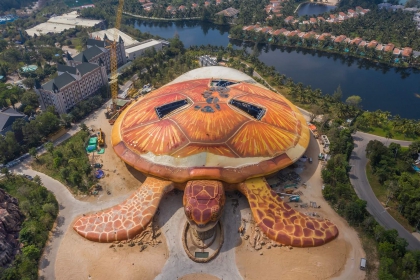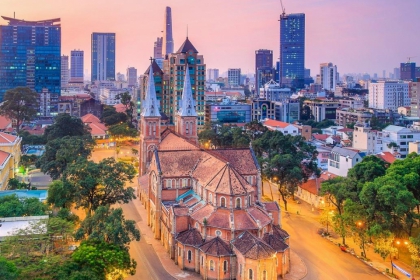Saigon Central Post Office
introduce
Saigon Central Post Office, the largest post office in Vietnam, is an attraction that attracts many tourists in Ho Chi Minh City. The building features Western architectural style combined with Eastern decoration and was built by the French from 1886 to 1891.
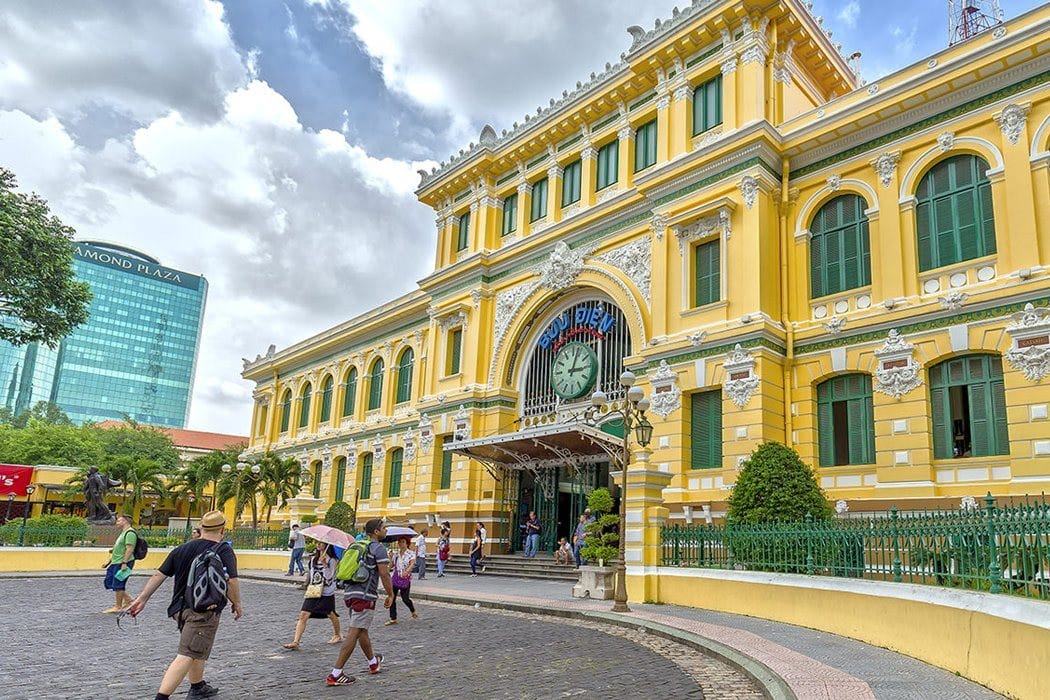
Featured attractions
Saigon Central Post Office is located at No. 2, Paris Commune Road, the highest point in Ho Chi Minh City. Like the Notre-Dame Church opposite, the Saigon Central Post Office is one of the most beautiful buildings in Vietnam with Renaissance architectural style. Tran Minh Hai, a tour guide who leads tourists to visit Saigon Central Post Office, said: "Saigon Central Post Office and Notre Dame Church are tourist attractions that almost all tourists who visit Ho Chi Minh City must visit. Tourists in group tours and backpackers generally go here because it is included in the list Vietnam Travel Guide. What makes this building special is its French architecture.”
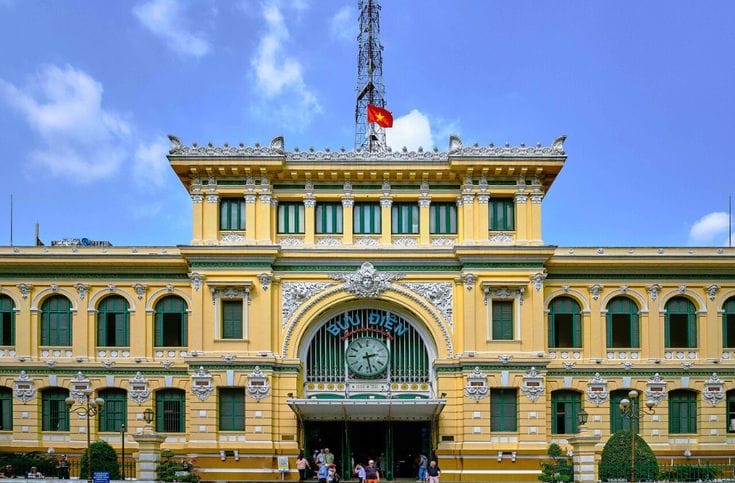
Much has been said about the designer of the Saigon Central Post Office. Vietnamese media said the post office was designed by the famous French architect Gustave Eiffel, who had designed the Eiffel Tower in France and the Statue of Liberty in the United States. But there are other records saying that the Saigon Central Post Office was designed by architect Villedi and his assistant Foulhoux.
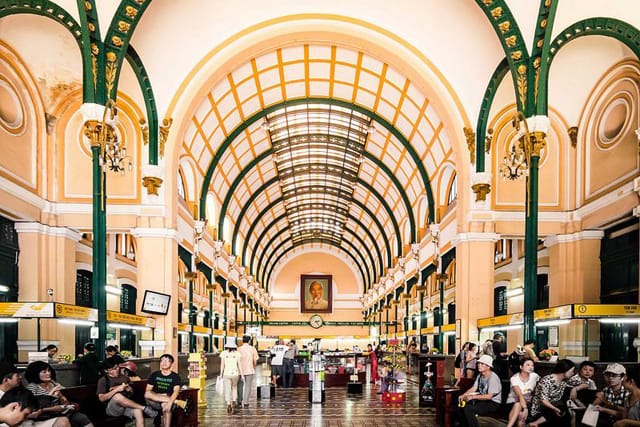
It can be seen from the different construction stages of the Saigon Central Post Office that the project was originally designed by the architect Gustave Eiffel and redesigned 23 years later by the architect Villedi and his assistant Foulu. This three-story building has a beautiful shape. From the outside, it has arched windows, a big clock hanging on the main door, and the Vietnamese flag fluttering in the wind.
The windows on either side of the building are arched or semi-arched, while those on the front wall are vertical rectangular. The horizontal lines, decorative patterns or graphic lines on the wall of Saigon Central Post Office are symmetrical and reminiscent of European train stations.
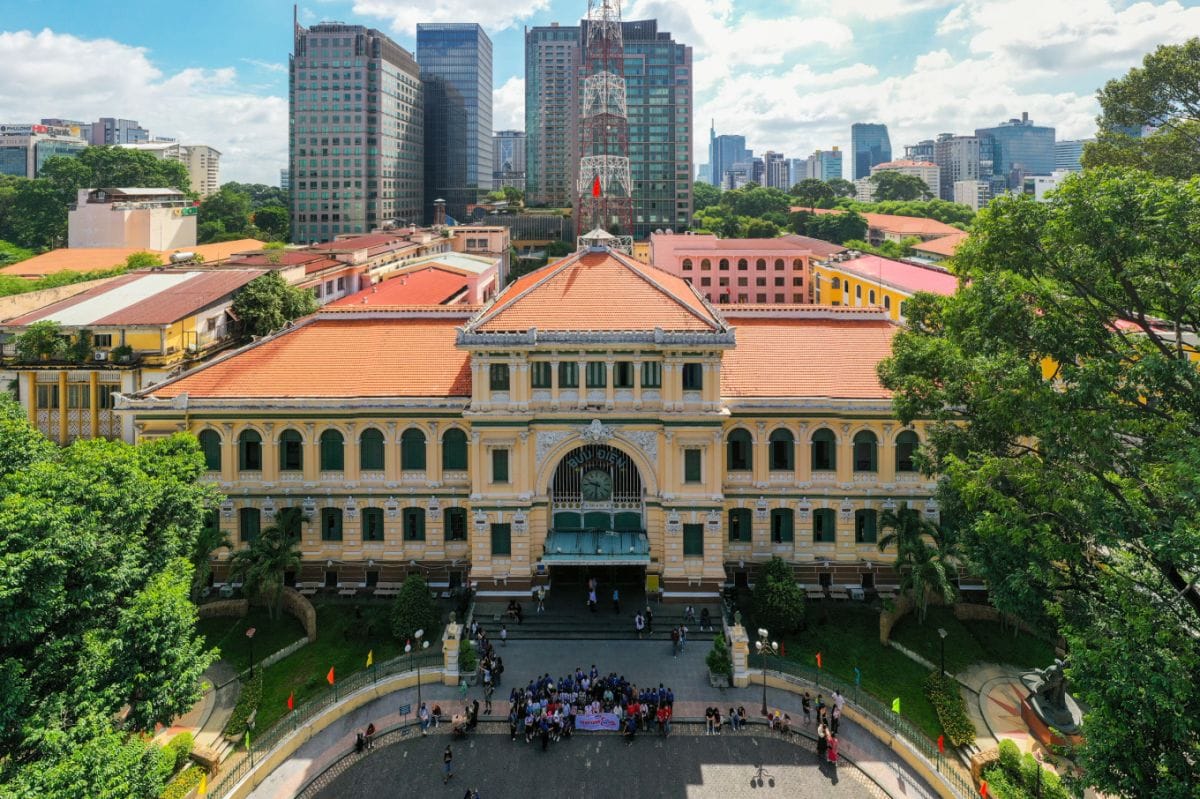
The 20 pillars in front of the building are cubic structures with very delicate reliefs on the tops. The reliefs on the pillars on the first and second floors of the building are wrapped with rectangular stone slabs, each of which is engraved with the name of a scientist who made great contributions to human civilization in the fields of electricity and telegraphy.
In the Saigon Central Post Office Building, the arched roof opposite the entrance is supported by two rows of columns and an iron purlin and rafter system. It is very exquisitely designed and decorated with beautiful patterns. Entering the main entrance, you can see two maps hanging on the roofs on both sides. Those are the historical maps of Saigon et ses environs 1892 and Lignes téléraphiques du Sud Vietnam et du Cambodge 1936. Currently, there are 38 counters here, providing customers with a variety of postal services and domestic and foreign telegraph services.
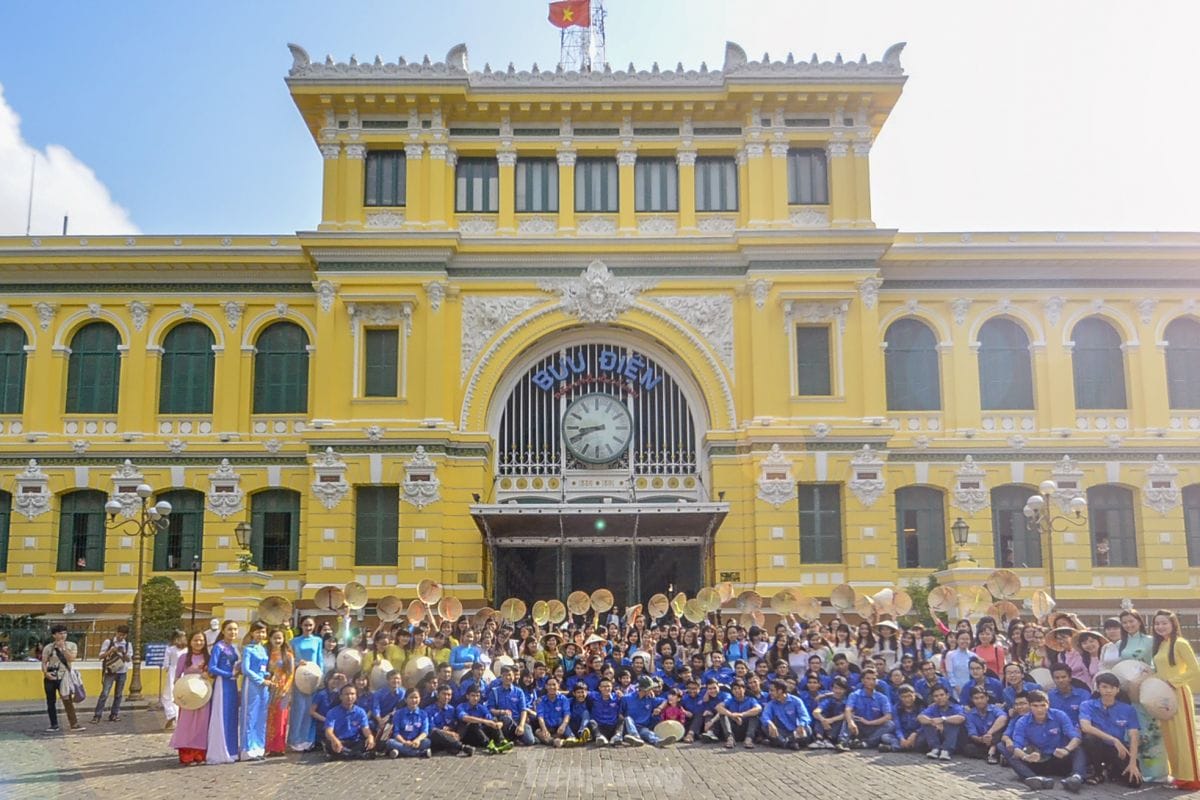
Visiting the Saigon Central Post Office, visitors can not only view its unique architecture, but also immerse themselves in the former space composed of mailboxes and telephone booths. Visitors can also sit and relax on centuries-old smooth wooden benches. Inside the post office building, time seems to move very slowly because you can see Saigon in the past from every angle.
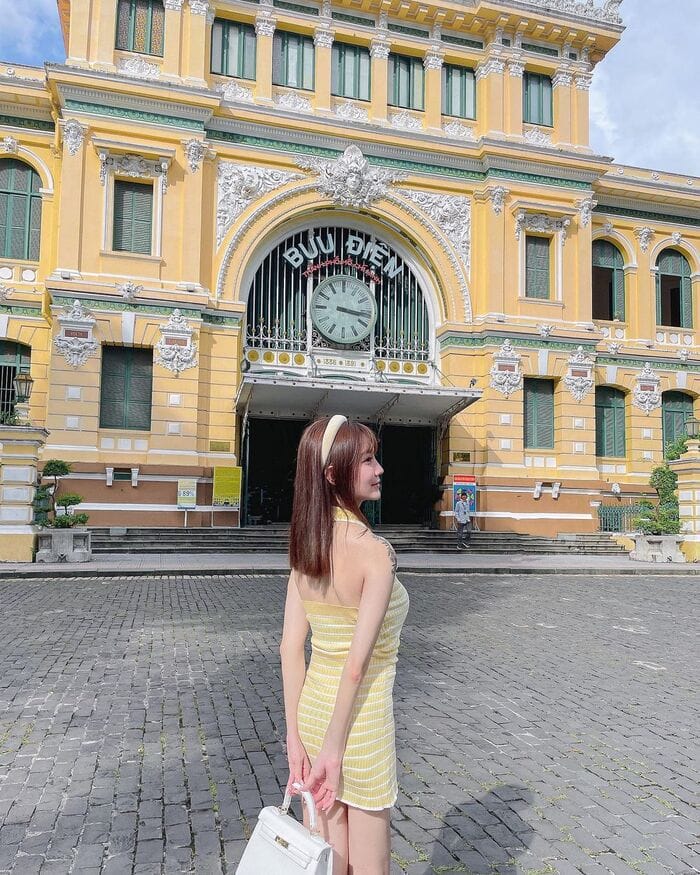
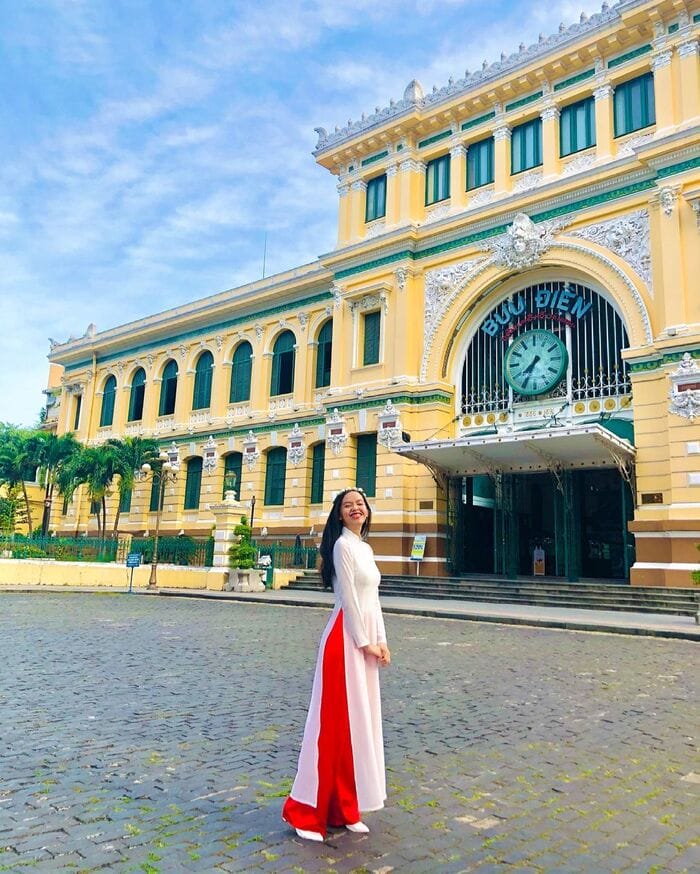
After hundreds of years of vicissitudes, the Saigon Central Post Office remains a beautiful and impressive architectural project. The Saigon Central Post Office Building and the Notre-Dame Church form a pair of interactive buildings that have been landmarks in Ho Chi Minh City both when they were first built and in the years that followed.








